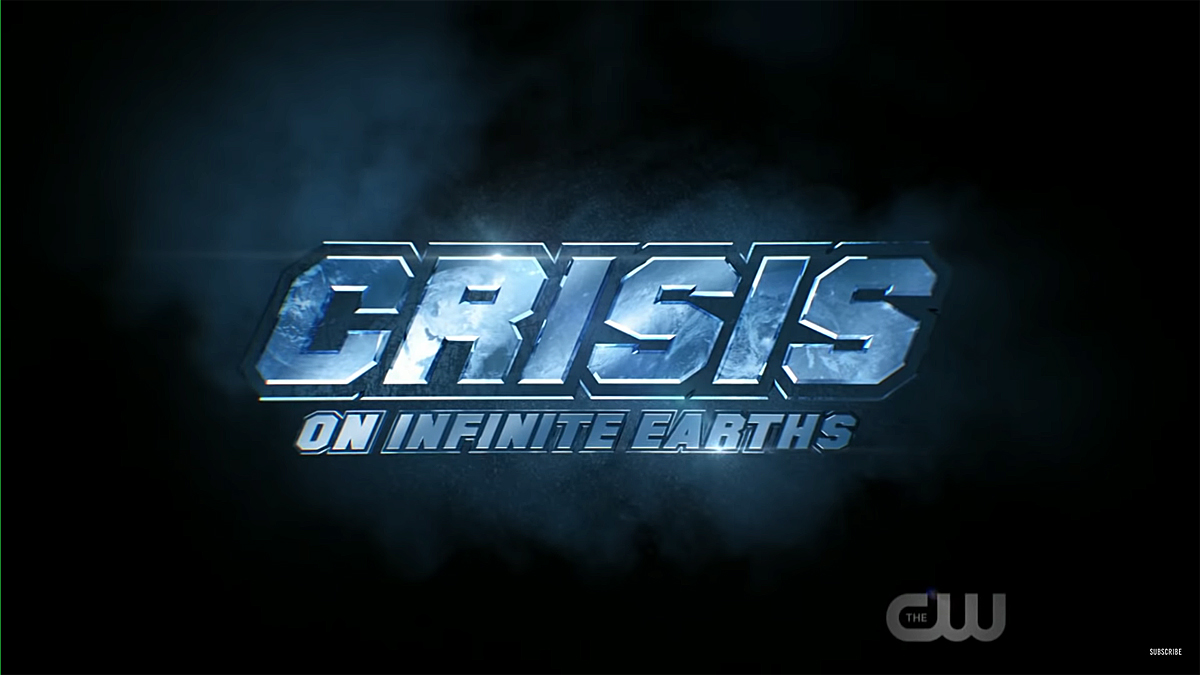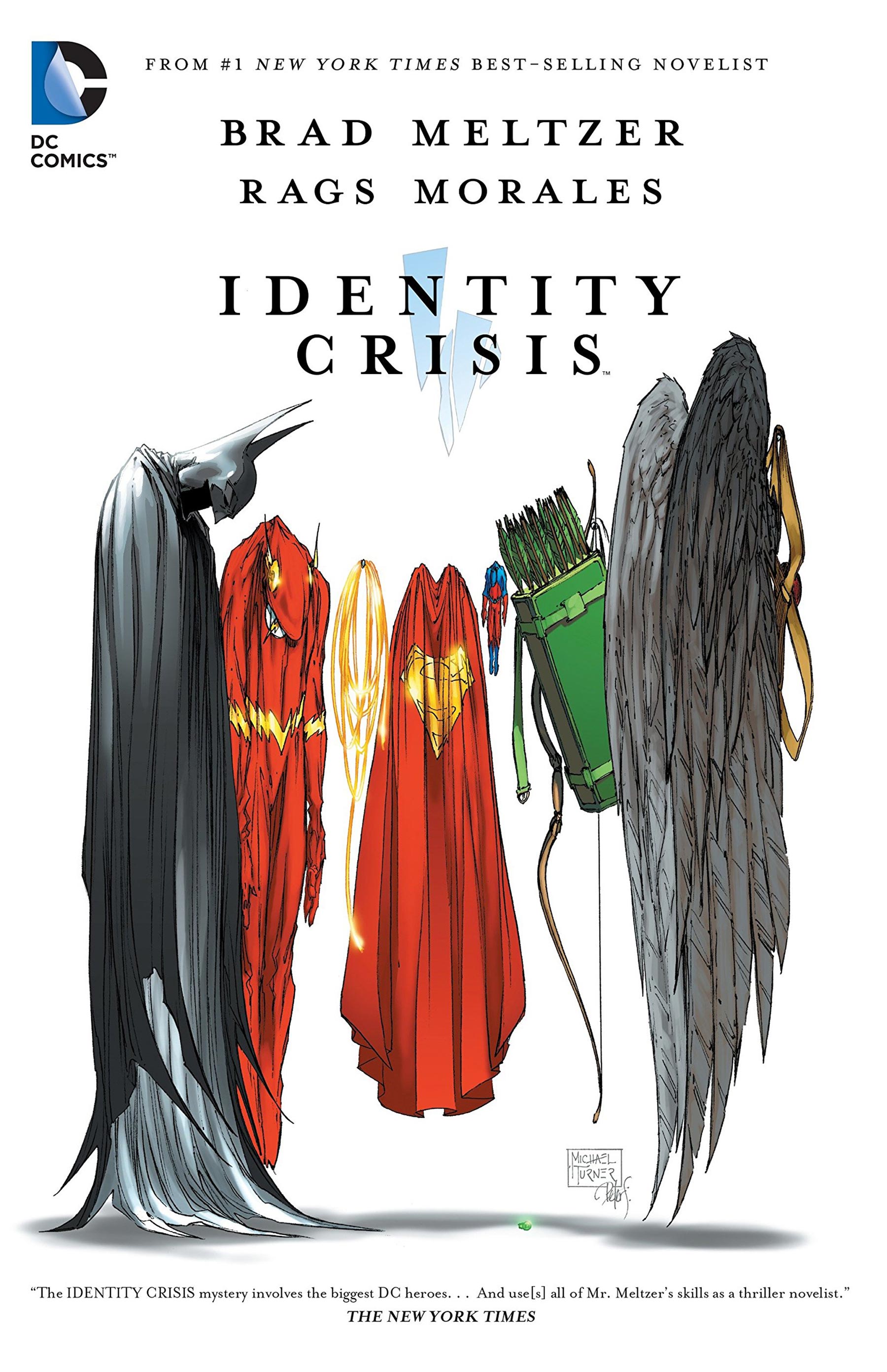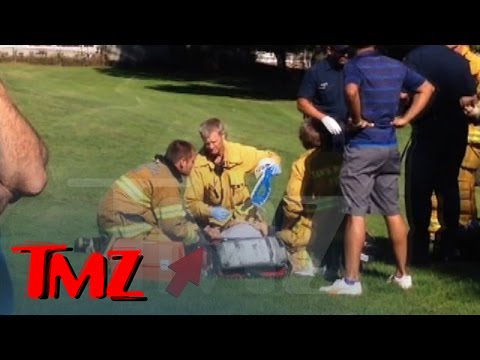
In October 2014, the series premiere of The Flash teased that a crisis was coming in 2024. Now, it seems as though that cataclysmic event will be here sooner than we thought.
Not only did Tuesday night’s Supergirl, the final hour of the Arrowverse’s “Elseworlds” crossover, tie up the three-night event’s reality-altering storyline, but it also setup next year’s crossover in a major way. After defeating Dr. John Deegan (Jeremy Davies) and fixing reality, Oliver Queen (Stephen Amell) received a call from Batwoman, who warned him that the newly incarcerated Deegan was getting chummy with his Arkham Asylum neighbor Psycho-Pirate (Bob Frazer), who delivered quite the ominous prophecy as the episode ended.
“Don’t worry, doctor, everything is as it should be,” says Psycho-Pirate. “The stage is set. Worlds will live. Worlds will die. And the universe will never be the same.”
If that wasn’t enough to tease next year’s crossover, a title card appeared on screen announcing that next year’s crossover would be called “Crisis on Infinite Earths,” which carries a lot of weight with DC fans because that’s also the name of one of the publisher’s most important stories ever. And there’s definitely reason to get hyped for it.

Crisis on Infinite Earths is a 12-issue maxiseries that forever changed the DC Universe that was published from 1985 to 1986. Conceived and executed by New Teen Titans dynamic duo Marv Wolfman and George Pérez, the story follows the Monitor, who appeared in “Elseworlds” (played by Designated Survivor’s LaMonica Garrett), as he recruits heroes from across the multiverse to stop his evil counterpart, the Anti-Monitor from destroying all of the earths in the multiverse. [32 YEAR SPOILER ALERT] The ensuing crisis claimed the lives of tons of DC heroes, most importantly Supergirl and Barry Allen/ the Flash.
The story’s main goal was to fix DC’s continuity. At that time, DC was juggling many fictional Earths within the pages of its comics. The versions of Superman, Batman, and Wonder Woman that everyone knows resided on Earth-1. Earth-2 was the home of their older Golden Age counterparts, while on Earth-3, everything was reversed and the heroes were the villains and vice-versa; and so on and so forth. While this multiverse concept created great storytelling opportunities (like “The Flash of Two Worlds,” which saw Barry Allen meet the Golden Age Flash Jay Garrick of Earth-2, and the annual Justice League of America/Justice Society of America crossovers) it also became a storytelling crutch for writers to explain away continuity errors, which mostly resulted in lots of confusion. So Wolfman and Pérez used Crisis to streamline DC’s shared universe by destroying the multiverse and merging elements of the many earths into one single shared Earth. As a result, many characters received modern updates, while others were written out of existence.
Even though Crisis was mainly a huge retcon (and, like Marvel’s Secret Wars, helped spawn the current era of “event comics”), the idea that Arrowverse will attempt its own version of it is still pretty exciting news because the story is truly epic and exciting to read the first time through. In fact, most readers probably never thought they’d ever see it adapted because it is so comic book-y, but the Arrowverse has always done a good job of embracing all aspects of the medium; from time travel to alternate worlds, identity swaps, aliens, and more.
Furthermore, the announcement of “Crisis on Infinite Earths” (the TV event) feels like the Arrowverse is finally delivering on a promise it made four years ago (Yes, the shows have been flirting with this story for that long). The Flash’s pilot ended with Harrison Wells/Eobard Thawne/Reverse Flash (Tom Cavanagh) reading a newspaper from the year 2024 that said the Flash (Grant Gustin) vanished in a crisis. Then, the speedy drama returned to this plot point in its fifth and current season, which introduced Barry and Iris’ (Candice Patton) daughter Nora, who traveled back to the present to meet her father because he disappeared (or died) before she ever got to know him. With Nora’s arrival in the present, we also got several more Crisis Easter eggs, including a reference to the villain Psycho-Pirate, who appeared in “Elseworlds” and worked with the Anti-Monitor in the original story. (Funny enough, Psycho-Pirate is one of the only characters who remembered the multiverse as Crisis).
To be fair, the reveal at the end of “Elseworlds” wasn’t totally surprising. Earlier in the event, Earth-90’s Flash (John Wesley Shipp) and the Monitor warned of a forthcoming crisis, and when EW visited the set of the crossover in October, both Amell and Supergirl’s Melissa Benoist teased that “Elseworlds” would setup next year’s big team-up. “These crossovers have always been kind of a one off,” Amell told EW when we mentioned that it felt like the Arrowverse was inching closer and closer to the crisis teased on The Flash. “This crossover doesn’t necessarily end with our three episode arc here. Having it looming, I think is pretty cool.” But that doesn’t detract from the anticipation tThe Flash, Arrow, Supergirl, and hopefully DC’s Legends of Tomorrow, which sat out “Elseworlds,” is finally going there.
At this point, it’s far too early to speculate what The CW’s “Crisis” will because Berlanti and company have always done a pretty good job of surprising the audience when adapting popular stories, the Arrowverse doesn’t share DC’s continuity problems, and honestly, anything is possible. But, this uncertainty is also what makes this entire endeavor exhilarating.
Related content:



